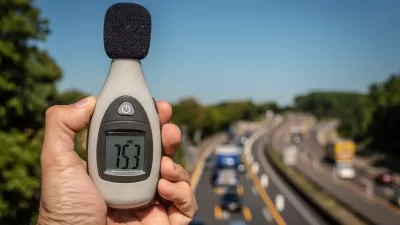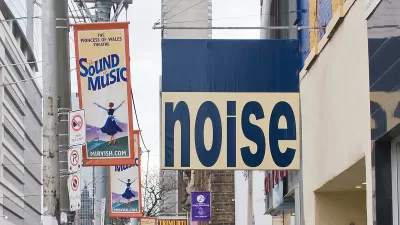The world is noisier than ever, and the long-term effects of exposure are serious. Still, noise pollution isn’t considered a legitimate environmental hazard.

"Noise is never just about sound; it is inseparable from issues of power and powerlessness. It is a violation we can’t control and to which, because of our anatomy, we cannot close ourselves off," writes Bianca Bosker. In this feature piece, she examines the increase in noise, in cities as well as in the most remote of places, and the physical and psychological toll on humans and animals.
Research has clearly shown that noise impacts health in a number of ways, reports Bosker. "Large-scale studies show that if the din keeps up—over days, months, years—noise exposure increases your risk of high blood pressure, coronary heart disease, and heart attacks, as well as strokes, diabetes, dementia, and depression." Yet noise pollution is not recognized as a public health threat and regulation has been inconsistent.
Bosker notes the many sources of noise in the modern world, but she describes in much more detail the particular case of data centers. Residents living near these complexes say the constant humming from the chillers at these huge complexes is unbearable. "Noise, having emancipated itself from the human hand, is becoming autonomous and inexhaustible. Human noisemakers have to sleep, but our mechanical counterparts, which do not tire, die, or strain their vocal cords, can keep up a constant, inescapable clamor," adds Bosker.
FULL STORY: Why Everything Is Getting Louder

Alabama: Trump Terminates Settlements for Black Communities Harmed By Raw Sewage
Trump deemed the landmark civil rights agreement “illegal DEI and environmental justice policy.”

Planetizen Federal Action Tracker
A weekly monitor of how Trump’s orders and actions are impacting planners and planning in America.

The 120 Year Old Tiny Home Villages That Sheltered San Francisco’s Earthquake Refugees
More than a century ago, San Francisco mobilized to house thousands of residents displaced by the 1906 earthquake. Could their strategy offer a model for the present?

In Both Crashes and Crime, Public Transportation is Far Safer than Driving
Contrary to popular assumptions, public transportation has far lower crash and crime rates than automobile travel. For safer communities, improve and encourage transit travel.

Report: Zoning Reforms Should Complement Nashville’s Ambitious Transit Plan
Without reform, restrictive zoning codes will limit the impact of the city’s planned transit expansion and could exclude some of the residents who depend on transit the most.

Judge Orders Release of Frozen IRA, IIJA Funding
The decision is a victory for environmental groups who charged that freezing funds for critical infrastructure and disaster response programs caused “real and irreparable harm” to communities.
Urban Design for Planners 1: Software Tools
This six-course series explores essential urban design concepts using open source software and equips planners with the tools they need to participate fully in the urban design process.
Planning for Universal Design
Learn the tools for implementing Universal Design in planning regulations.
Clanton & Associates, Inc.
Jessamine County Fiscal Court
Institute for Housing and Urban Development Studies (IHS)
City of Grandview
Harvard GSD Executive Education
Toledo-Lucas County Plan Commissions
Salt Lake City
NYU Wagner Graduate School of Public Service





























